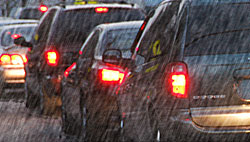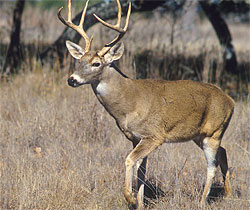Reprinted from NCDOT: http://www.ncdot.gov/travel/safetytips/default.html
If travel is absolutely necessary, motorists should use the following precautions:
· Clear windows and mirrors;
· Reduce speed and leave plenty of room between you and other vehicles;
· Maintain a safe following distance behind brine application trucks, and plow and spreader trucks;
· Bridges and overpasses accumulate ice first. Approach them with extreme caution and do not apply your brakes while on the bridge;
· If you begin to slide, take your foot off the gas and turn the steering wheel in the direction of the slide. Do not apply the brakes as that will cause further loss of control of the car;
· If you have a cellular phone, take it with you; you can contact the Highway Patrol statewide by calling HP (*47) or call the county emergency center by dialing 911; and
· Come to a complete stop or yield the right of way when approaching an intersection where traffic lights are out. Treat this scenario as a four-way stop.
How NCDOT prioritizes what roads are to be cleared first:
· The department gives first priority to clearing interstates and four-lane divided primary routes that are essential to the movement of intrastate and regional traffic. After these roads are clear, priority moves to clearing lower-volume primary roads, high-volume secondary roads, lower-volume secondary roads, then subdivision streets.
How NCDOT works with county and local governments to coordinate road clearing efforts:
· Many municipalities maintain DOT system streets normally and during winter weather events they will also incorporate state roads into their snow removal plans. County governments do not remove snow on highways.
How NCDOT responds to weather conditions:
· NCDOT works closely with the National Weather Service and receives forecasts directly from their meteorologists.
· During a winter storm, county maintenance crews in affected areas are typically on standby around the clock to monitor changing weather conditions and treat roads.
Interesting Facts:
· Small dump trucks hold 7 tons of salt and larger dump trucks hold 8-9 tons of salt
· 120,000 tons of salt = 1.27 billion salt shakers
· 40,000 tons of salt is enough salt to fill up 5,714 dump trucks and 426 million salt shakers
· Each dump truck is 19.5 feet long and if you lined them up end to end, the line would extend for 21 miles
Most of all, Be Safe Everyone!
Keep a warm jacket, blanket, flares, and a safety kit in your vehicle. Just in case.
Keep it between the lines - and on the road,
Happy Motoring
Best ged study guide book for you
Our GED study guide can help you maximize the effectiveness of the time you spend in preparation of GED test and are guaranteed to get the results you deserve on test day.
http://www.ged-pre-test-practice.com

